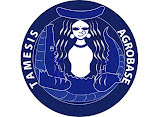Various Species of Honey Bees and their descriptions:
Bees belong to Superfamily Apoidea of the order Hymenoptera. Their body is covered with small, branched hairs. Their body secretes wax to make nests.Superfamily Apoidea has nine families of bees leading either social or solitary lives.Bees leading an advanced social life produce honey and they belong to three families viz. Apidae, Bombidae and Meliponinae.
Honeybees are of two types:
True honeybees of genus Apis
Stingless bees of genus Trigona
Genus Apis has six species out of them 4 types of honey bees are found in Indian sub-continent.
(Apis florea, A. cerana indica, A. dorsata and A.laboriosa.)
Dwarf Honey Bee (Apis Florea):
Dwarf honey bees or Apis florea are the smallest of honeybees and often mistaken for stingless bees since they do not sting easily.
They prefer sub-tropical or plains with hot and dry climates. Their comb shows a distinct honey portion at the top.
Combs are found in closely placed plant stalks like those of rice and jawar or in small trees with dense leaves.
Indian Hive Bee (Apis Indica):
Known as a sub-species of the Asian bees Apis cerana. There are two varieties here:
(A. indica Gandhiana):
They are dark and large.
It is considered to be of the plain variety. They make combs in cavities like those in tree crevices, rock cavities etc. They exhibit an absconding tendency yet they are one of the domesticated varieties.
(A. Indica): They are yellow and smaller.
European Bee (Apis Mellifera):
Originated in Italy and introduced to various places around the globe. This species was brought to India in 1965(the original stock in north India). It was multiplied and the progenies were distributed to other states by the All India Coordinated Project on Honey Bee Research Training, ICAR Central Bee Research and Training Institute, also by Khadi and Village Industries Commission.
It yields on an average 4 times more honey than Indian hive bees.
Around the globe, it is the most preferred bees for honey bee farms as it has a gentle temper, less swarming.
The queen of this species is very prolific, produces more honey, hives are adaptive in frames.
The Rock Bee (Apis Dorsata):
These bees build their nests out in the open and are given support underneath such as using a tree branch, rock cliff, etc. This is one reason why they are called rock bees. They build the largest hives measuring up to 200 cm X 150 cm in dimensions. They are semi-circular and hang from above. They even forage during moon-lit nights. Forest honey hunting is commonly carried out with rock bees.
Stingless honey bees:
there are more than 80 species of stingless honey bees but we are not going to look for all of them here we will talk about native Indian honey bee Trigona iripipennis:
T. iripinennis are India’s native breed and their nests consist of many small honeys pot like structures instead of honeybee’s regular hexagonal combs. It is 3-mm in size and its sting is poorly developed.
The bees make nests in the hollows of trees, rocks, cracks of any structure or even on the ground.
The honey of this species has many medicinal properties, it is antibiotic in nature and traditionally used in healing sores, wounds and eye infections.




